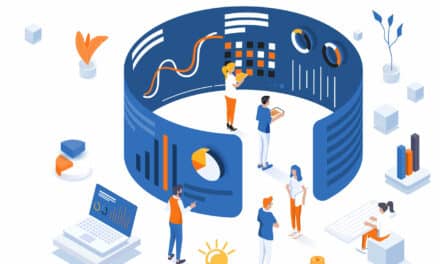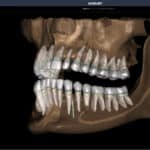Even though AI is still in its infancy, it is already a cheat code for the practices that are using it for their marketing.
By Steven Martinez
Artificial intelligence is the hottest technology on the consumer and professional markets, but as fun as it can be to test its eerily natural chatting ability or create absurd art, it’s not always easy to see how it can be a useful tool. It turns out, however, that even in its burgeoning state, AI can be useful for marketing an orthodontic practice.
Orthodontic marketing consultant Beth Leach says that whether you realize it or not, AI is already powering the marketing and promotional markets. It is used to create images, written content, and video in a seamless enough manner that you might not realize something you interacted with was at least partially created with the use of AI.
“We are using AI for nearly everything we do these days,” says Leach. “We use ChatGPT to create ideas to create outlines for written content. It’s a great place to start. If you’re going to write a blog, if you’re going to write a script, if you’re going to do a TikTok video—a lot of my clients are doing tons of TikTok. It’s a great place to find ideas of things to do.”
ChatGPT is an AI powered chatbot that continues to be the most public face of the technology. While technology behind chatbots has been around forever— Leach’s mother was an employee of IBM in the 50s when they created a precursor to conversational AI in computer programs that could respond to simple if/then prompts—ChatGPT’s language model is powered by all the publicly available information on the internet. From news to social media, to academic journals, ChatGPT can draw on this information and generate a response to just about any question you can imagine.
You can ask ChatGPT or any of a growing multitude of competitors to recall information, correct grammar, or outline business strategies. About the only thing Leach says you shouldn’t do with it, from a marketing perspective at least, is ask it to write for you.
“We never ever, ever use it to actually produce content,” says Leach. “You don’t want to use AI as your content, especially on Google. They’ll downgrade you for that. There’s AI checkers all over the place.”
Google’s search engine optimization (SEO) algorithm is designed to serve people the most relevant content related to their searches. However, when it detects that an AI has written content, like a blog post, it will downgrade the post in its search results, defeating the marketing purpose of posting content in the first place.
So if you aren’t using ChatGPT to supplement your own writing abilities, then what good does it serve? Leach says that ChatGPT is great for making outlines to help structure thoughts on a particular subject or even generate new ideas for content.
“Content is still king on Google and the most important thing you can have is fresh content,” she says.
Leach encourages practices she advises to post blog content, not just to game Google’s SEO, but as an avenue to advertise the brand of the practice and of the doctor as an expert. She says if a practice is using new technology or treatment methodologies, they should write about it and show prospective patients and Google SEO that the doctor is an expert, and their content is worth reading.
“I see it all the time where you know this doctor is using LightForce or KLOwen and they’re not talking about it at all on their website,” says Leach. “Well, you can use blogs to talk about it.”
It’s also a great way to improve SEO rank for what’s called longtail keywords, either longer phrases or questions that people might be typing in.
“We have software that tells us what questions people are asking and we can say to the doctors, here are the questions that people are asking,” says Leach. “Fifteen thousand people have asked the same question, write a blog on this.”
AI can also be used to help write scripts and come up with ideas for social media like TikTok and Instagram. Leach says a lot of doctors use the youngest person in the office to handle social media for a practice but while they may be familiar with the latest online trends, they usually don’t know that much about orthodontics. So, while the videos might be more fun and youthful, they don’t really drive traffic to a practice’s website which in turn would bring in new patients.
That’s where ChatGPT can really shine to generate very specific ideas that can actually help you attract new patients. If you use specific language, you can ask it to write 10 ideas for TikTok videos about orthodontic care and it will generate 10 ideas, almost instantly. Then you can pick the 3 best ideas and ask it to write a script using those ideas for an Instagram or TikTok video. “And it will produce amazing results,” says Leach.
“I use it for consulting, which has helped me to find ideas that I haven’t thought of. I’ve been consulting for over 30 years in orthodontics, and I’ve worked with Ormco, I’ve worked with Align, and most of the big names in the country. There’s not a lot I don’t know about orthodontics at this point,” says Leach. “It has helped me open my eyes and go, wow, there are things that I haven’t thought of that I can then use to advise my clients.”
While AI is mostly known for its remarkable ability to write and answer questions, it is also now capable of producing art for websites and even audio. If you need a generic marketing photo, say of a child playing sports, tools like Midjourney and Canva can generate passable images. But it still has some limitations, particularly if you want to include more complicated details.
If you’ve ever looked at some of the AI photos where they’ve asked it to include braces on, it’s horrific,” says Leach. “They’ve got braces in their eyes; it’s so bad it’s not even funny. So, it’s not at all ready for primetime as far as orthodontics goes.”
AI can also replicate a person’s voice allowing editors to add audio to a video or podcast that, if done in moderation, is almost imperceptible unless you know to listen for it. Which of course begs the question that looms over AI any time you start really thinking about where the technology will be in 10 years’ time. Will AI replace all human creativity, at least at the lowest levels? And what about art? Who gets credit for an image that was generated using other people’s work without crediting them? Or scariest of all, what happens when you can’t tell if the things you see and listen to have been altered in some way?
“I think there’s going to have to be some guardrails placed and I think they’ve started to do that already,” says Leach. “AI chatbots that are pretending to be people need to be identified. Those guardrails need to be put in place and they’re not right now. The other thing that scares me is altered before and after pictures. If those are altered now, how do we know what’s real and what’s not? Are you actually getting these results or mediocre results? We don’t know because the pictures have been altered.”
Leach is also concerned about protecting original IP like articles that doctors might write about procedures or techniques being stolen wholesale because an AI just reproduces it elsewhere without credit. As it stands now, there are no firm answers. AI has arrived and like so many other new technologies, the rules to regulate it will probably be years behind.
It’s still early days for AI and while some aspects of it are half baked or not fully realized, they still offer practices a compelling tool for marketing a practice. So much so, that not realizing the benefits it can provide could end up hindering a practice’s growth.
“It saves you money because it saves you time and time is money. I get 30% to 40% more productivity every day because I use AI,” says Leach. “The people who work for me use it and they are therefore more productive, and therefore I get more done.”OP
Photo 150617956 © Sompong Sriphet|Dreamstime.com










